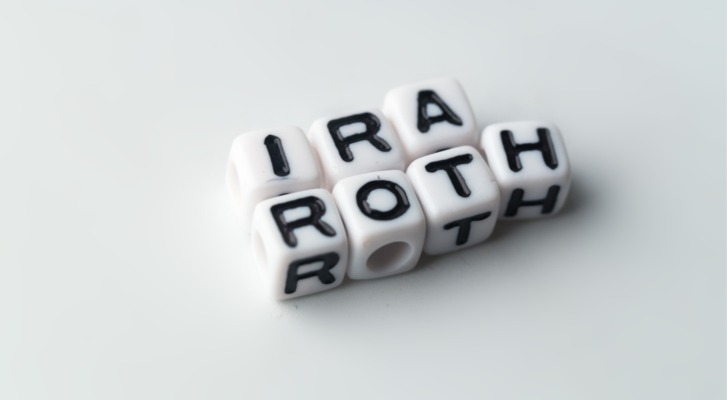A Roth conversion is one of the many tools in the financial toolbox to reduce taxes in retirement and maximize income. But not all retirees or those planning their retirement consider converting their savings into Roth assets, mainly because it requires paying taxes on the money now in exchange for tax-free growth.
New research from T. Rowe Price shows how and when you may stand to benefit from a Roth conversion, even when your tax rate falls or remains the same in retirement.
The company found that Roth conversions can be especially valuable if you’re planning to leave assets to heirs as part of your estate plan and you have a taxable account to cover the taxes associated with the conversion. In at least one scenario, Roth conversions that used a taxable account to pay Uncle Sam boosted the eventual inheritance by 14%.
A financial advisor can help you complete a Roth conversion and manage other retirement assets. Find a trusted advisor today.
Roth Conversion Basics

While traditional IRAs are retirement accounts funded with pre-tax dollars, Roth IRAs hold money that’s already been taxed. As a result, a retiree who withdraws money from a Roth IRA doesn’t have to pay taxes on any of the money – principal or interest – since they already paid taxes on the money they contributed.
A Roth conversion is a way to transfer assets from a pre-tax account, like a traditional IRA, into an after-tax account. A Roth conversion requires you to pay income taxes on the money in your traditional IRA in the year they complete the conversion. Those assets can then grow tax-free in your Roth account.
Roth IRAs also have the benefit of being exempt from required minimum distributions (RMDs), which can push a retiree into a higher income tax bracket, lead to higher taxes on his Social Security benefits and push his Medicare premiums higher, as T. Rowe Price notes.
But Roth conversions may not make sense for everyone. Someone who expects to be in a lower tax bracket in retirement may avoid a Roth conversion because he’ll owe fewer taxes on his money later on compared to now.
When a Roth Conversion Works Best

The SECURE Act of 2019 changed the rules for inheriting a traditional IRA, requiring heirs to fully draw down the account within 10 years. But those rules don’t apply to Roth IRAs. Because they’re exempt from RMDs, Roth IRAs can be passed down to heirs tax-free.
With this in mind, T. Rowe Price examined the impact that Roth conversions – and the use of taxable accounts to pay for them – would have on an eventual wealth transfer. Using the test case of a couple with considerable assets who don’t need RMDs to cover their retirement expenses, T. Rowe Price calculated how much their heirs would receive after taxes if:
- No Roth conversion was ever completed
- Roth conversions took place every year from age 55 to 75
- Roth conversions took place every year from age 65 to 75
The financial services firm considered potential changes in the couple’s tax rate in retirement compared to their working years, as well as the tax rate of the heir(s).
T. Rowe Price’s analysis found that a couple whose tax bracket doesn’t change in retirement could leave up to 4.6% more money to their heirs if they started converting their assets at age 65 compared to no Roth conversion at all. This assumes the couple uses a taxable account that’s subject to both capital gains and ordinary income tax rates to pay for the conversion. It also assumes the heir’s tax rate won’t change.
Converting assets earlier leads to an even bigger windfall under these circumstances, T. Rowe Price found. If the couple started converting assets at age 55, the future inheritance could be worth 14% more than it would with no conversions.
Even if the couple sees their tax rate fall from 24% to 22% in retirement, Roth conversions at age 55 and 65 would increase the size of their bequest by 12.2% and 4.3%, respectively.
The value of a Roth conversion, however, diminishes if the account that’s used to pay the taxes produces 100% tax-free returns. For example, if the couple sold assets in a taxable account that hadn’t generated any capital gains or interest, they wouldn’t owe capital gains or income taxes on the sale. Under these parameters, Roth conversions actually reduced the value of the couple’s eventual bequest in most of T. Rowe Price’s calculations.
Bottom Line
Roth IRA conversions can be especially useful for retirees who don’t need their RMDs to pay for living expenses, and instead, can pass on their savings to their heirs. T. Rowe Price found that using a taxable account to pay for the taxes associated with a Roth conversion can boost your heir’s eventual inheritance.
Tips for Roth IRA Owners
- SECURE 2.0 Act, signed by President Biden in late 2022, allows 529 plan money to be rolled into a Roth IRA for a beneficiary. The rollover allowance starts in 2024 and cannot exceed the Roth contribution limit for the year. Also, keep in mind that you can’t roll over more than $35,000 total in the beneficiary’s lifetime.
- A financial advisor can help you complete a Roth conversion and integrate the account into a holistic retirement plan. Finding a financial advisor doesn’t have to be hard. SmartAsset’s free tool matches you with up to three vetted financial advisors who serve your area, and you can interview your advisor matches at no cost to decide which one is right for you. If you’re ready to find an advisor who can help you achieve your financial goals, get started now.
Photo credit: ©iStock.com/courtneyk, ©iStock.com/jxfzsy, ©iStock.com/kali9
